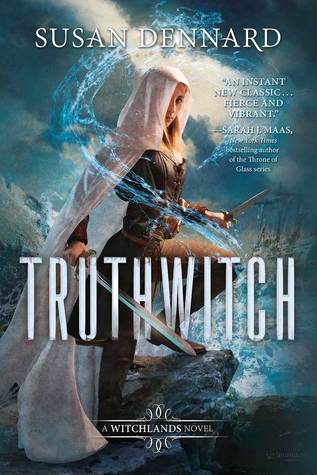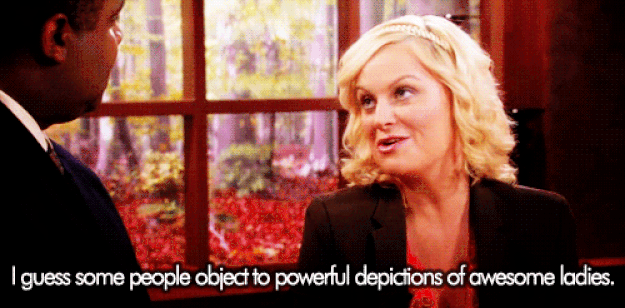Truthwitch

Adapted from : GoodReads
Ohhhhh Truthwitch. I have been seeing blogger Adriyanna Zimmermann talk about this book for aaaaages, so when I found out Chapters Indigo was running a buy 3 get 1 YA book sale, I decided to grab it. Since the sequel is coming out soon, I decided to make it the first one I read of my new purchases.
Long story short: I don’t think I’ve been this into a book since book 1 of the Grisha series.
Where to begin. When I think of this novel, the biggest thing I think about is the relationships. Not just of the romantic kind, but of the friendship variety, of the enemy variety, of the indifferent or undecided variety. Because Truthwitch really is a story about relationships. Hell, even Iseult’s power relates to them. So I think the only true way to talk about this book is to talk about in in relation to these relationships.
Threadsisters 4eva
Lets start with our main characters, Safiya and Iseult. Something that has become all too common in YA is young women being pit against one another, be it for a significant other, a promotion, an internship, popularity at school, etc. And to a degree, I can see why it exists in fiction: it exists in life. It has become depressingly normalized in western culture. That being said, just because something happens, doesn’t mean it should. This is why I get so excited when I see strong female friendships in novels, and why it is so important. In showing them, authors are
A. showing that not every arc needs to center around a man (or any love interest for that matter) and B. it challenges the stereotype that women see all other women as threats.
Also, since we’re talking about women in media, it is important to note that this book 100% passes the Bechdel Test, which is always awesome.

The bar to pass this test is so low, yet sadly, so rarely achieved.
Another set of threadsiblings is Merik and his first mate Kullen. Their friendship is not given as much page time, but you get the sense that there is a real trust and mutual respect there. It makes it that much harder when (SPOILER) Kullen ultimately cleaves, that is to say is overtaken by his magic and dies.
But wait! There is romance too?
The way I see it, there are 2 main romantic relationships in this novel (SPOILER) Safiya and Merik as well as Kullen and Ryber. You could argue that Iseult and Aeduan is being teased out, but not enough has been confirmed for us to know for sure where that’s going. To be seen in the sequels! and what I love about them both is that they are realistic and well paced (or already established). There is none of this “we just met and are now true soul mates forever and nothing will separate us at all”. The main relationship is a slow build that shows all of the confusing feelings you get when you start to like someone, including the attraction that typically comes with. But it doesn’t promise forever. As I sat there reading, it made me think of when I met my significant other. It’s awkward and clumsy and confusing and amazing.
And since we’re talking so much about relationships in this novel, (SPOILER) what kind of cruel monster would take Kullen away from Ryber as well as Merik?! Talk about a double attack on my heart Susan!
Any critiques?
But inevitably, no book is perfect. When I initially read the book, I thought that Safi was a POC (I believe the word used was tan, but I’ve often seen that word used for People of colour. I don’t love that because it’s not really specific enough, but I think that a lot of authors struggle with language when it comes to describing characters physically), so I was pretty excited about that. But I then realized that the character on the front of the book is supposed to be Safi, and I was a little deflated. I then googled dream casting for the entire group of main characters and realized that much of the fan art depicts them all as white. I guess when I read, I saw the cast as more diverse than it apparently is (this is also an indicator of the fact that I skim character physical descriptions…).
That being said, it just shows me why my 2017 resolution to read more diverse (specifically “own voices”) stories this year is so important.
In conclusion
Other than that bit of disappointment, I did really love this story. It was pretty well paced with good writing and, because saying it once isn’t enough, had such amazing strong female leads who support each other through it all! Invaluable, truly.

Funfact: Every time I write the word invaluable, I feel weird, because the language learner in me says that the word should mean “not valuable”, but the linguist in me knows better. In case you were wondering: the “in” prefix (which is usually used to show negation) here designates that it is not possible to attach a value. So “invaluable” does not mean “not valuable” but rather “not possible to attach a value to” because its value is too high… LINGUISTICS NERDS UNITE!
Be sure to get into this series soon because the sequel, Windwitch comes out tomorrow!
